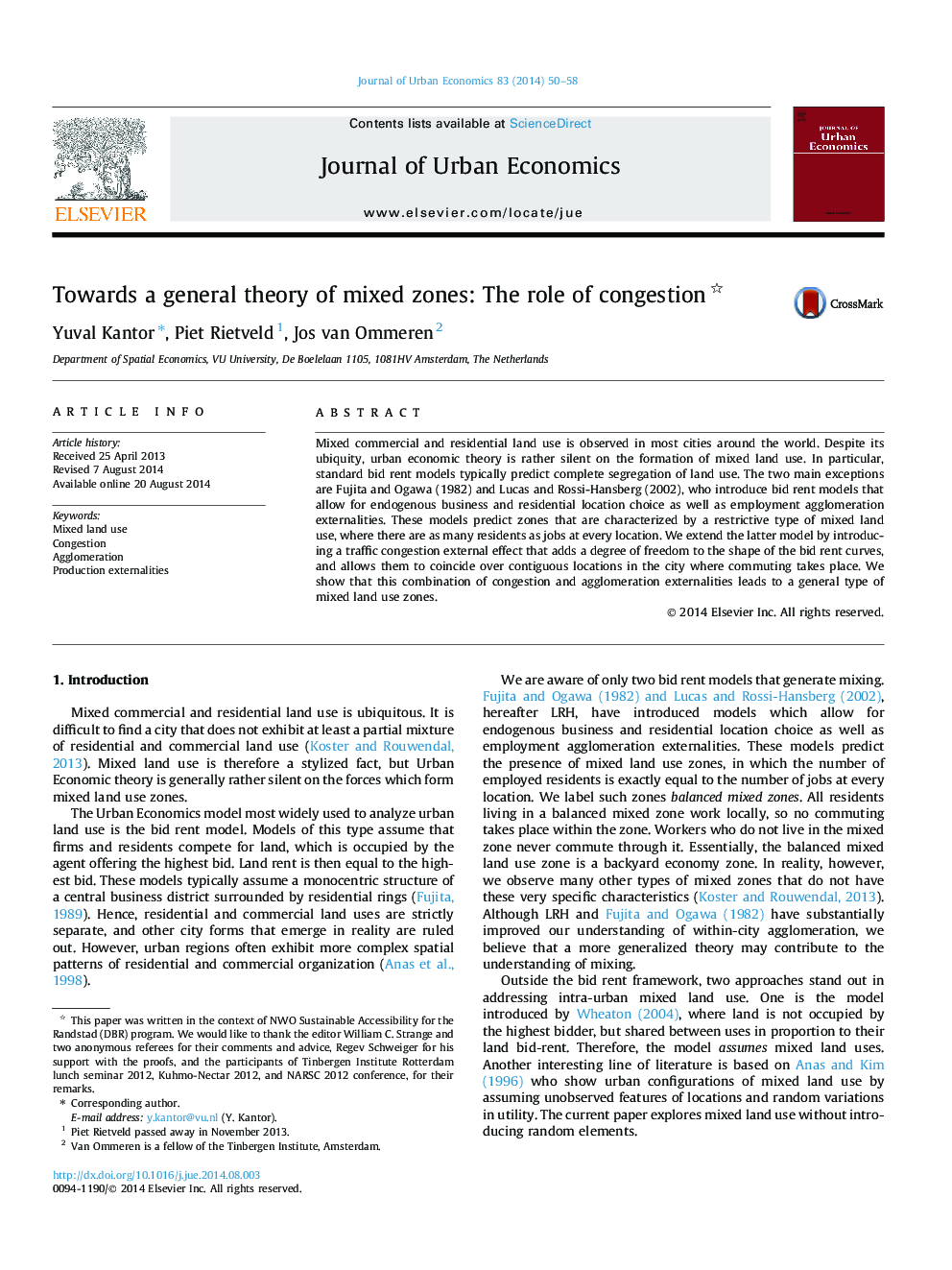| Article ID | Journal | Published Year | Pages | File Type |
|---|---|---|---|---|
| 970667 | Journal of Urban Economics | 2014 | 9 Pages |
Mixed commercial and residential land use is observed in most cities around the world. Despite its ubiquity, urban economic theory is rather silent on the formation of mixed land use. In particular, standard bid rent models typically predict complete segregation of land use. The two main exceptions are Fujita and Ogawa (1982) and Lucas and Rossi-Hansberg (2002), who introduce bid rent models that allow for endogenous business and residential location choice as well as employment agglomeration externalities. These models predict zones that are characterized by a restrictive type of mixed land use, where there are as many residents as jobs at every location. We extend the latter model by introducing a traffic congestion external effect that adds a degree of freedom to the shape of the bid rent curves, and allows them to coincide over contiguous locations in the city where commuting takes place. We show that this combination of congestion and agglomeration externalities leads to a general type of mixed land use zones.
